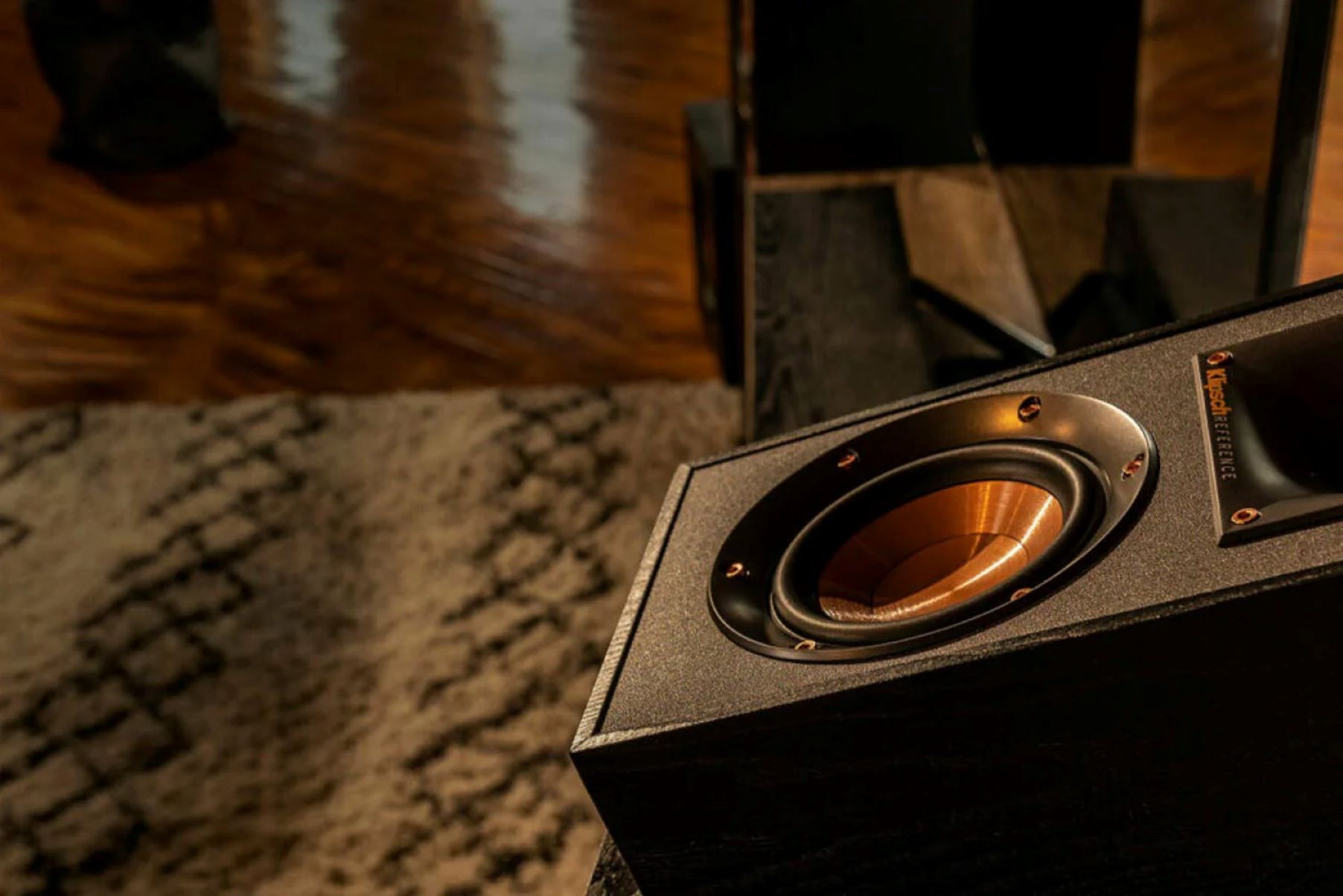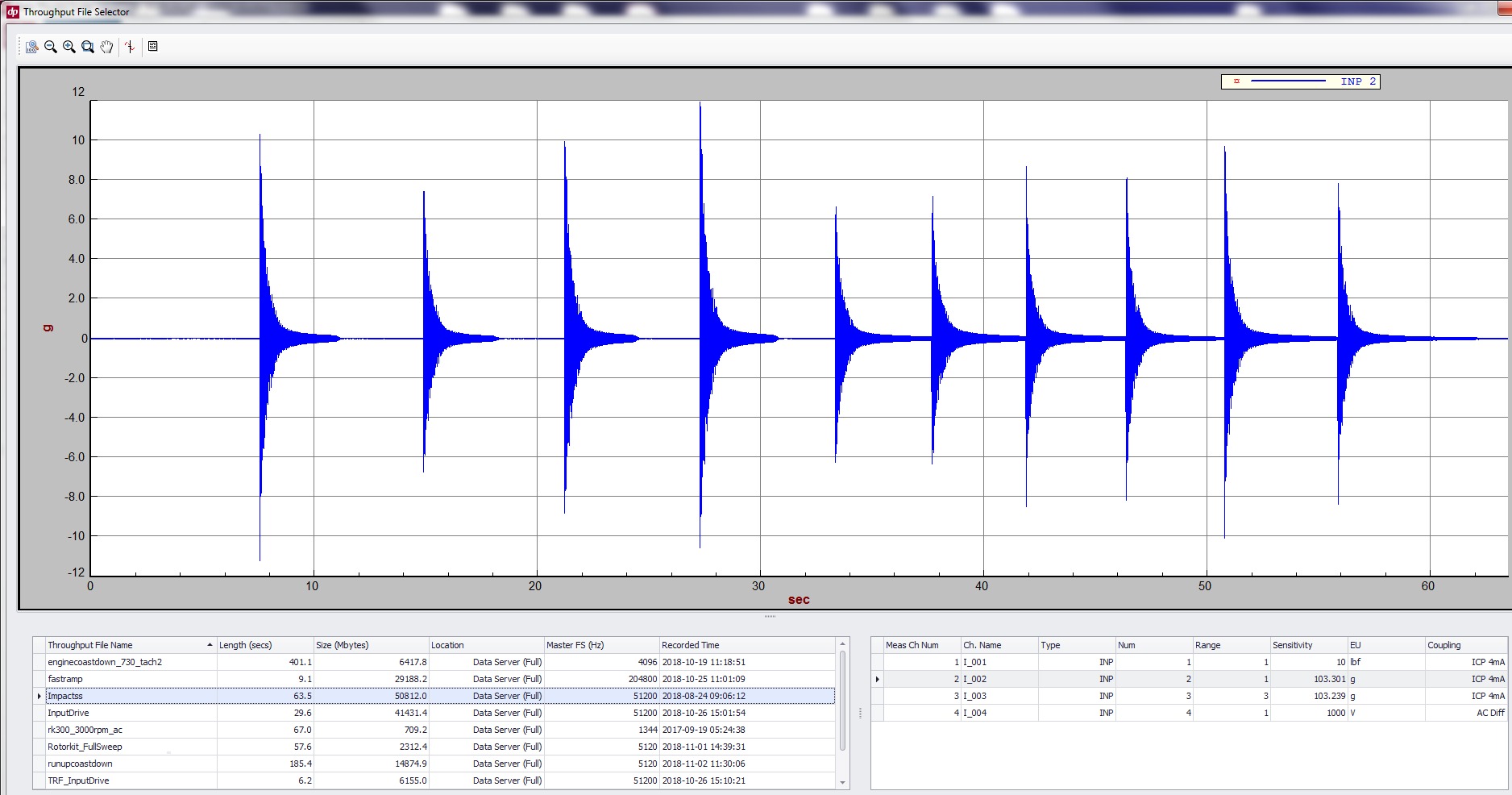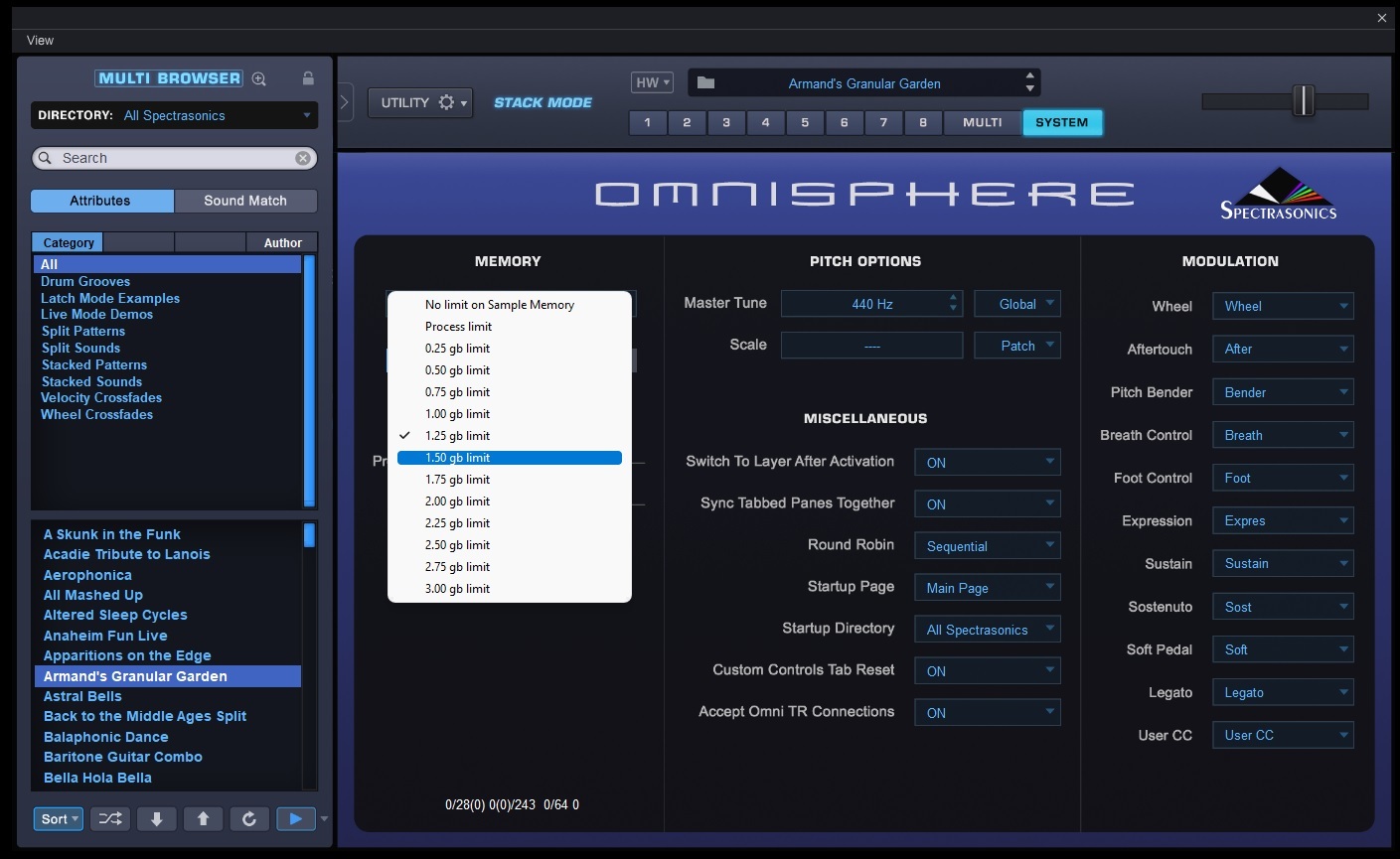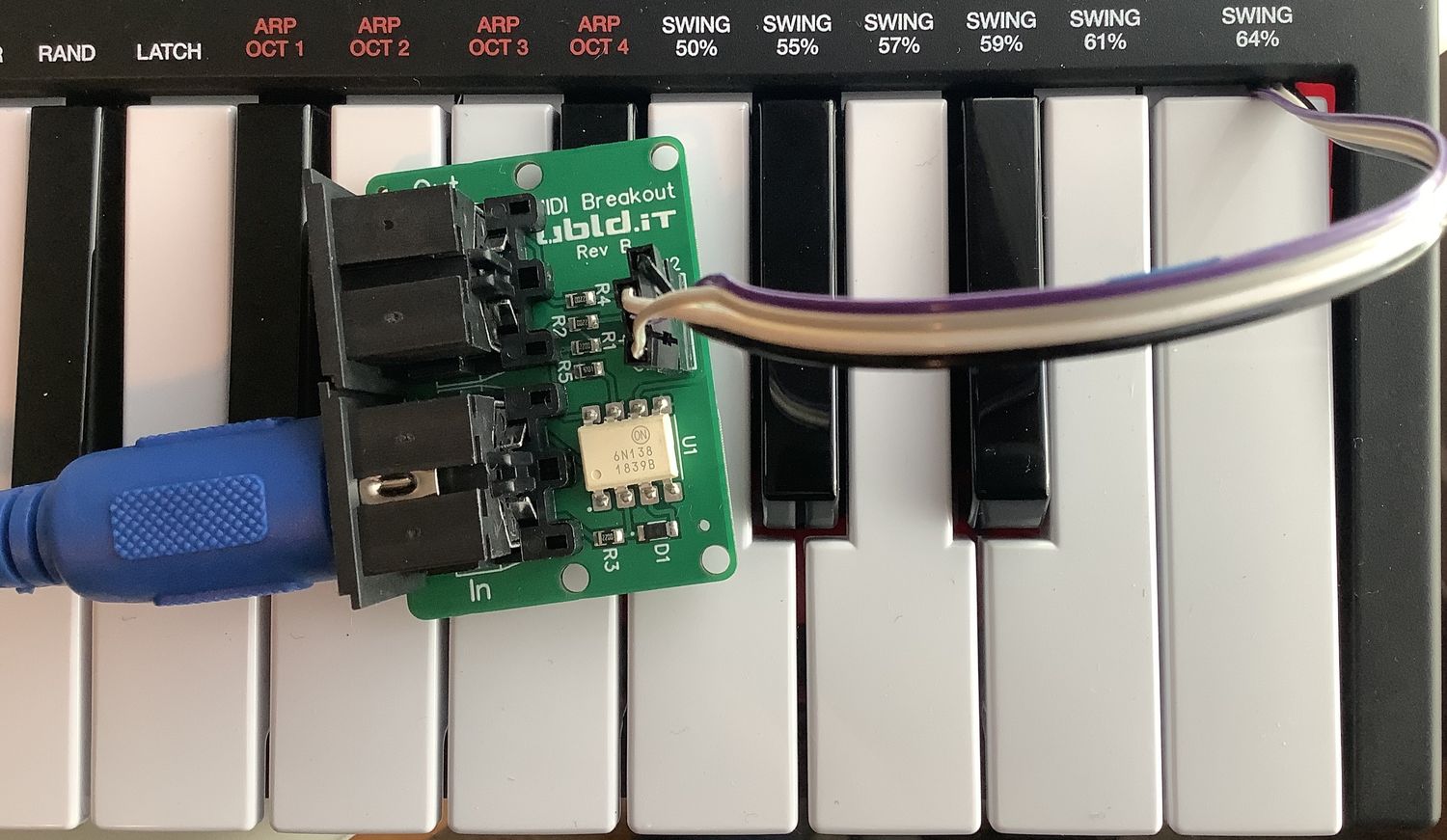Home>Production & Technology>Soundproofing>How To Rate Soundproofing Material For Condominium Flooring
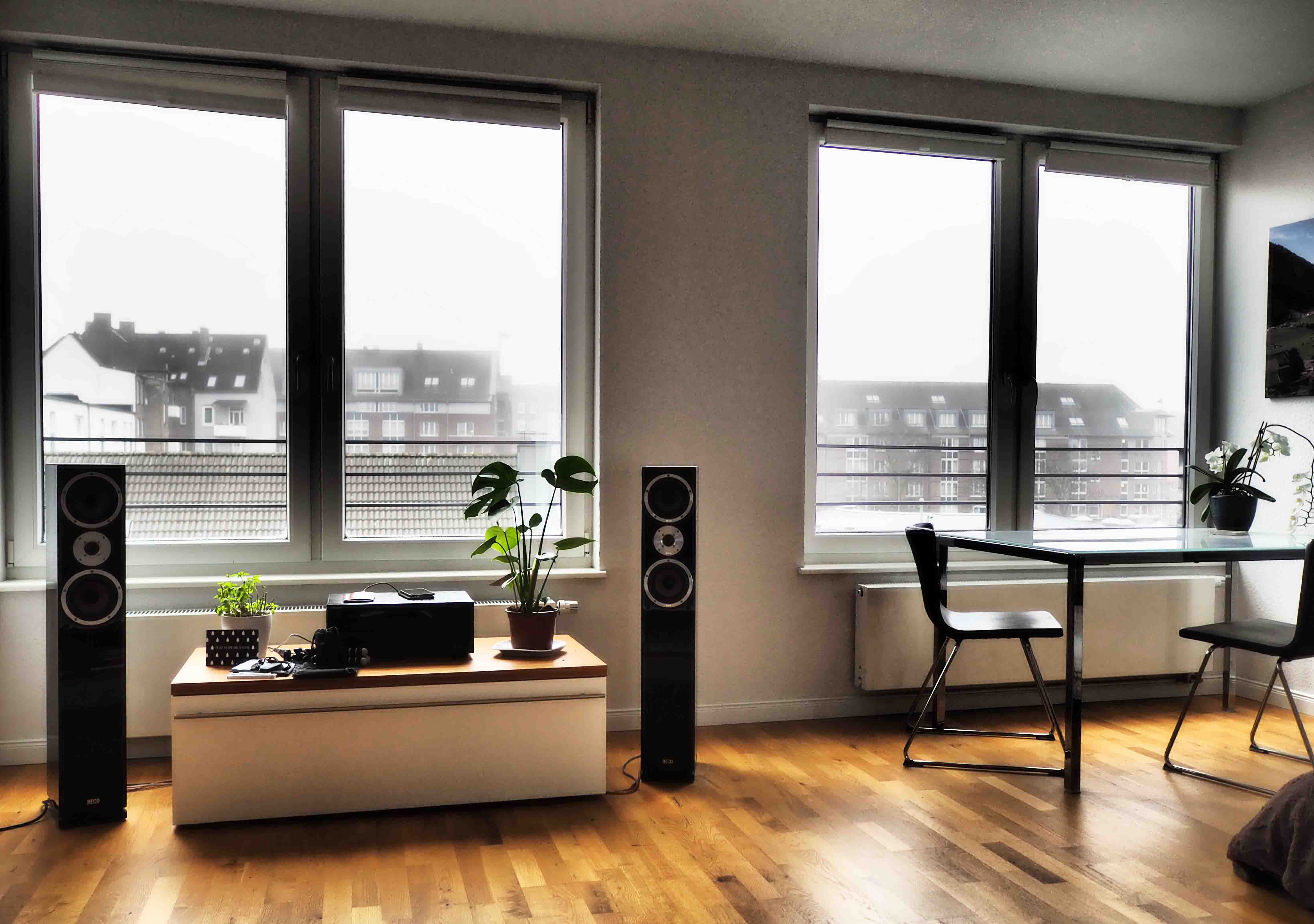

Soundproofing
How To Rate Soundproofing Material For Condominium Flooring
Published: January 27, 2024
Learn how to rate soundproofing material for your condominium flooring and create a peaceful living environment. Enhance noise reduction with expert tips on choosing the right soundproofing solutions.
(Many of the links in this article redirect to a specific reviewed product. Your purchase of these products through affiliate links helps to generate commission for AudioLover.com, at no extra cost. Learn more)
Table of Contents
- Introduction
- Understanding Soundproofing
- Importance of Soundproofing for Condominium Flooring
- Factors to Consider When Rating Soundproofing Material
- Key Considerations for Evaluating Soundproofing Materials
- Types of Soundproofing Materials
- Performance Ratings for Soundproofing Materials
- Testing Methods for Assessing Soundproofing Materials
- Recommended Soundproofing Materials for Condominium Flooring
- Conclusion
Introduction
Welcome to our comprehensive guide on how to rate soundproofing material for condominium flooring. Living in a condominium can come with its fair share of noise challenges, especially in multi-unit buildings where sound can easily transfer between floors. Whether you’re a homeowner looking to improve your living environment or a building manager seeking to enhance tenant satisfaction, soundproofing your condominium flooring is a worthwhile investment.
Soundproofing is the process of reducing or minimizing sound transmission from one area to another. It involves using various materials and techniques to create barriers that prevent sound waves from passing through walls, ceilings, and floors. When it comes to condominium flooring, effective soundproofing can significantly improve the overall comfort and quality of life for residents by reducing noise pollution from neighboring units and common areas.
Rating soundproofing material for condominium flooring can be a complex task, as it requires evaluating various factors and considering the unique needs and characteristics of each living space. In this guide, we will provide you with a comprehensive understanding of soundproofing, the importance of soundproofing for condominium flooring, and the key considerations for evaluating soundproofing materials.
By the end of this article, you will be equipped with the knowledge to make informed decisions when it comes to choosing the right soundproofing materials for your condominium flooring. So, let’s dive in and explore the intricacies of soundproofing and how to rate soundproofing material effectively.
Understanding Soundproofing
Before we delve into the process of rating soundproofing material for condominium flooring, it’s important to have a solid understanding of what soundproofing is and how it works.
Soundproofing is the practice of reducing or eliminating the transmission of sound from one area to another. It involves incorporating materials and techniques that absorb, block, or isolate sound waves, preventing them from traveling through walls, floors, ceilings, or other structures.
Sound is a form of energy that travels in waves, and when these waves encounter a surface, they can be absorbed, reflected, or transmitted. Effective soundproofing aims to disrupt the path of sound waves, preventing them from escaping or entering a specific area.
There are two primary methods used in soundproofing: sound absorption and sound insulation.
Sound Absorption
Sound absorption involves using materials that can absorb sound waves, converting sound energy into heat. These materials are designed to reduce the reverberation and echo within a space, improving acoustics and preventing sound from bouncing off surfaces and causing disturbances.
Common sound absorption materials include acoustic panels, foam, fiberglass, and mineral wool. These materials are often strategically placed on walls, ceilings, or floors to absorb and dissipate sound energy.
Sound Insulation
Sound insulation, on the other hand, focuses on creating barriers that prevent sound waves from passing through. Insulation materials are used to block or reduce sound transmission by impeding the movement of sound waves through solid, liquid, or gas mediums.
Key sound insulation materials include mass-loaded vinyl, rubber underlayment, resilient channels, and soundproofing mats. These materials are incorporated into walls, floors, and ceilings to create a barrier that limits the transfer of sound.
It’s essential to note that soundproofing is not about complete silence but rather about reducing unwanted noise and creating a more comfortable and peaceful environment. It can help minimize the impact of external noises, such as street traffic or neighboring units, and improve the overall acoustic quality of a space.
Now that we have a clear understanding of the fundamentals of soundproofing, let’s explore why soundproofing is crucial for condominium flooring.
Importance of Soundproofing for Condominium Flooring
Living in a condominium can be a rewarding experience, offering convenience and a sense of community. However, one common challenge in multi-unit buildings is the transfer of noise between floors, which can greatly impact the residents’ comfort and quality of life. This is where soundproofing for condominium flooring becomes vitally important.
Noise pollution from neighboring units, including footsteps, conversations, music, or even appliances, can disturb the peace and quiet of your living space. Unwanted noise can lead to stress, sleep disturbances, reduced concentration, and overall dissatisfaction with your condominium living experience.
By implementing effective soundproofing measures for condominium flooring, you can reap several benefits:
1. Noise Reduction
The primary advantage of soundproofing is to minimize and control the level of noise entering or leaving your living space. Sound barriers and insulation materials absorb or block sound waves, significantly reducing noise transmission. This allows you to enjoy a quieter and more peaceful environment, free from the disturbances caused by common condominium noise sources.
2. Privacy and Comfort
Soundproofing your condominium flooring enhances privacy, creating a sense of personal space. It prevents sound from easily traveling between floors, minimizing the chances of unintentionally eavesdropping on your neighbors’ conversations or them overhearing yours. Additionally, reduced noise levels contribute to a more comfortable living environment, allowing you to relax, concentrate, and sleep without disruptions.
3. Enhanced Property Value
Investing in soundproofing for your condominium can increase its market value. Potential buyers or tenants are often attracted to properties that prioritize comfort and tranquility. By providing efficient soundproofing measures, you can differentiate your condominium from others in the market and potentially command a higher price or rental income.
4. Legal Compliance
In some jurisdictions, there may be regulations or building codes in place that require a certain level of soundproofing between residential units. By ensuring your condominium flooring meets or exceeds these requirements, you avoid potential legal issues and maintain compliance with local regulations.
Overall, soundproofing your condominium flooring is essential for creating a peaceful, comfortable, and enjoyable living environment. It allows you to maintain privacy, reduce noise disturbances, and enhance the overall value of your property. Now that we understand the importance of soundproofing, let’s explore the factors to consider when rating soundproofing materials for condominium flooring.
Factors to Consider When Rating Soundproofing Material
When it comes to rating soundproofing material for condominium flooring, there are several factors that should be taken into consideration. These factors will help you evaluate the effectiveness and suitability of different soundproofing options for your specific needs. Here are the key factors to consider:
1. Noise Reduction Coefficient (NRC)
The Noise Reduction Coefficient (NRC) is a rating system that measures the sound absorption capabilities of a material. It indicates how much sound energy a material can absorb rather than reflect. A higher NRC value signifies better sound absorption. Consider materials with a high NRC rating to minimize unwanted echoes and reverberations.
2. Impact Insulation Class (IIC)
The Impact Insulation Class (IIC) rating measures a material’s ability to reduce impact noises, such as footsteps or moving furniture, from transferring through the floor. The higher the IIC rating, the better the material is at dissipating impact noise. Look for materials with a high IIC rating for effective impact noise reduction.
3. Sound Transmission Class (STC)
The Sound Transmission Class (STC) rating evaluates a material’s ability to block airborne noises from passing through it. A higher STC rating indicates better sound insulation properties. It’s crucial to choose materials with a high STC rating to prevent airborne sounds, such as voices or music, from entering or leaving your living space.
4. Thickness and Density
Thicker and denser materials generally offer better soundproofing properties. As sound waves encounter dense materials, they are absorbed or reflected more effectively, reducing their transmission through the floor. Consider materials with a sufficient thickness and density for improved soundproofing capabilities.
5. Installation Ease
The ease of installation is an important factor to consider, especially if you plan to install the soundproofing material yourself. Some materials require professional installation, while others are designed for do-it-yourself projects. Consider your skill level and time availability when choosing a soundproofing material.
6. Durability and Maintenance
Consider the durability and maintenance requirements of the soundproofing material. Choose materials that are resistant to wear and tear, water damage, and deterioration over time. Additionally, opt for materials that are easy to clean and maintain for long-lasting soundproofing performance.
7. Budget
Set a budget for your soundproofing project, as costs can vary depending on the materials and installation involved. Consider the long-term benefits and value that effective soundproofing can provide and allocate your budget accordingly.
By carefully evaluating these factors, you can make an informed decision when rating soundproofing material for your condominium flooring. Keep in mind that the suitability of a material may vary depending on your specific requirements, so consider your unique needs and priorities when making your selection.
Now that we’ve discussed the factors to consider, let’s explore the key considerations for evaluating soundproofing materials in more detail.
Key Considerations for Evaluating Soundproofing Materials
When evaluating soundproofing materials for condominium flooring, there are several key considerations that can help you make an informed decision. These considerations will ensure that the chosen material effectively meets your soundproofing needs. Here are the key factors to keep in mind:
1. Material Type
There are various types of soundproofing materials available in the market, each with its own unique properties and benefits. Some common options include mass-loaded vinyl, acoustic underlayment, soundproofing foam, and cork flooring. Consider the specific characteristics of each material and choose the one that aligns with your soundproofing objectives.
2. Compatibility with Flooring
Ensure the soundproofing material is compatible with your existing or planned flooring. Some materials work better with certain flooring types, so it’s important to choose a material that will not negatively affect the performance or aesthetics of your flooring.
3. Acoustic Performance
Assess the acoustic performance of the soundproofing material and its ability to effectively reduce noise transmission. Consider factors such as impact noise reduction (IIC rating), airborne noise reduction (STC rating), and sound absorption (NRC rating) to determine how well the material will address your specific noise concerns.
4. Installation Method
Consider the installation method required for the soundproofing material. Some materials may require professional installation, while others have user-friendly installation options for DIY enthusiasts. Evaluate your skill level and the complexity of the installation process before making your selection.
5. Space Constraints
Assess the available space for installing the soundproofing material. Some materials may be thicker or take up more space, which could affect door clearances or require adjustments to existing structures. Ensure that the chosen material can be accommodated within the physical constraints of your living space.
6. Fire Safety Ratings
Check the fire safety ratings of the soundproofing material. Fire safety is crucial in any living space, so it’s essential to choose materials that have proper fire resistance and meet the necessary safety standards.
7. Aesthetic Appeal
Consider the aesthetic appeal of the soundproofing material. While the primary goal is to reduce noise, it’s also important to choose a material that complements your interior design and enhances the visual appeal of your condominium flooring.
8. Budget and Longevity
Evaluate the cost-effectiveness of the soundproofing material. Consider the longevity and durability of the material to ensure that your investment will provide long-term benefits. Remember to balance your budgetary constraints with the desired soundproofing performance.
By carefully considering these key factors, you can evaluate and select the most suitable soundproofing materials for your condominium flooring. Keep in mind that there may not be a one-size-fits-all solution, so it’s important to weigh the pros and cons of each material and how it aligns with your specific soundproofing goals.
Now that we have explored the key considerations for evaluating soundproofing materials, let’s dive into the different types of soundproofing materials available in the market.
Types of Soundproofing Materials
When it comes to soundproofing your condominium flooring, there is a wide range of materials available to choose from. Each type of material offers unique properties and benefits, targeting different aspects of soundproofing. Here are some common types of soundproofing materials:
1. Mass-Loaded Vinyl (MLV)
Mass-loaded vinyl is a dense, flexible material that is effective at blocking airborne sound transmission. It is typically used as an underlayment between the subfloor and the finished flooring. MLV is easy to install and provides great soundproofing properties for impact noise reduction.
2. Acoustic Underlayment
Acoustic underlayment is a versatile soundproofing material that provides cushioning and sound insulation between the subfloor and the finished flooring. It is commonly made from materials such as foam, rubber, or cork. Acoustic underlayment absorbs impact noise and helps reduce sound transmission through the floor.
3. Soundproofing Foam
Soundproofing foam, also known as acoustic foam, is designed to absorb sound waves and minimize reverberation within a space. It is often used on walls or ceilings to improve acoustics and reduce echoes. While soundproofing foam is more effective for controlling sound reflections, it can also provide some degree of sound insulation.
4. Cork Flooring
Cork flooring is a natural and sustainable option that offers both soundproofing and thermal insulation benefits. The unique cellular structure of cork helps to dampen sound vibrations, reducing airborne and impact noise. Cork flooring is a popular choice for soundproofing condominium floors due to its eco-friendly characteristics and comfortable underfoot feel.
5. Soundproofing Mats
Soundproofing mats, also known as sound barriers or acoustic mats, are dense materials that are placed between the subfloor and the finished flooring. These mats provide excellent sound insulation by blocking both airborne and impact sounds. They are easy to install and can be used with various types of flooring materials.
6. Resilient Channels
Resilient channels are metal strips or channels that are installed on walls or ceilings to provide sound isolation. When drywall or other finishing materials are attached to these channels, the sound vibrations are isolated, reducing the transfer of noise between spaces. Resilient channels are commonly used in condominiums and multi-unit buildings.
7. Soundproofing Curtains
Soundproofing curtains are heavy-duty curtains made from dense materials with sound-absorbing properties. They are typically used in addition to other soundproofing materials to improve sound insulation. Soundproofing curtains are an affordable and easy-to-install option, especially for controlling external noise such as street traffic or loud neighbors.
These are just a few examples of the soundproofing materials available for condominium flooring. It’s important to assess your specific soundproofing requirements and consult with professionals to determine the most suitable material for your needs.
Now that we’ve explored the different types of soundproofing materials, let’s move on to understanding the performance ratings associated with these materials.
Performance Ratings for Soundproofing Materials
When evaluating soundproofing materials for condominium flooring, it’s essential to understand the performance ratings associated with these materials. These ratings provide valuable insights into the effectiveness of the materials in reducing noise transmission. Here are some common performance ratings to consider:
Noise Reduction Coefficient (NRC)
The Noise Reduction Coefficient (NRC) measures the sound absorption capabilities of a material. It is represented as a value between 0 and 1, with a higher value indicating better sound absorption. Materials with a higher NRC rating are more effective at reducing echoes and reverberation within a space. When evaluating soundproofing materials, consider the NRC rating to assess their sound absorption properties.
Impact Insulation Class (IIC)
The Impact Insulation Class (IIC) rating measures the ability of a material to reduce impact noise transmission, such as footsteps or furniture movement. The IIC rating indicates how well a material can absorb or isolate these impact vibrations. Higher IIC ratings indicate better impact noise reduction. Consider the IIC rating when evaluating soundproofing materials to assess their effectiveness in reducing impact noise.
Sound Transmission Class (STC)
The Sound Transmission Class (STC) rating measures the sound insulation properties of a material. It evaluates the material’s ability to block airborne noise from passing through, such as voices or music. The STC rating is represented on a scale, and higher ratings indicate better sound insulation performance. When reviewing soundproofing materials, pay attention to the STC rating to determine their effectiveness in reducing airborne noise transmission.
Flanking Transmission
Flanking transmission refers to sound transmission through building elements that are not directly in contact with soundproofing materials. This can include structural elements, ductwork, or open gaps. Consider the flanking transmission risks of your condominium flooring and choose soundproofing materials that address these potential sound leakage points. It’s essential to ensure that the selected materials create a comprehensive sound barrier and minimize flanking transmission.
Fire Safety Ratings
Fire safety ratings assess the ability of a material to resist fire or slow down its spread. When selecting soundproofing materials, it’s crucial to consider their fire safety ratings. Look for materials that have been tested and certified to meet the necessary fire safety standards. Fire safety should always be a priority when choosing soundproofing materials for your condominium flooring.
While these performance ratings provide valuable information, it’s important to remember that they should be considered in conjunction with other factors, such as material type, installation method, and budget. Each rating contributes to a specific aspect of soundproofing performance, and understanding them can help you make informed decisions about the materials that best suit your needs.
Now that we have discussed the performance ratings, let’s explore the testing methods used to assess soundproofing materials.
Testing Methods for Assessing Soundproofing Materials
To accurately assess the performance of soundproofing materials, various testing methods are used to measure their effectiveness in reducing noise transmission. These testing methods provide quantitative data and insights into the soundproofing capabilities of different materials. Here are some commonly used testing methods:
Sound Transmission Class (STC) Testing
STC testing is a standardized method used to measure the sound insulation properties of materials. It involves subjecting a material to a range of frequencies and measuring the transmission loss of sound through the material. The higher the STC rating, the better the material is at blocking airborne noise. STC testing helps evaluate the material’s ability to reduce noise from voices, music, or other airborne sources.
Impact Insulation Class (IIC) Testing
IIC testing evaluates the ability of a material to reduce impact noise transmission, such as footsteps or furniture movement. This testing method involves creating a controlled impact on a material and measuring the resulting sound transmission through the material to the receiving room below. The higher the IIC rating, the better the material is at reducing impact noise. IIC testing helps assess the material’s effectiveness in minimizing footfall noise or other impact-related sounds.
Reverberation Time Testing
Reverberation time testing measures the time it takes for sound to decay within a space after the sound source has been stopped. This testing method helps evaluate the sound absorption properties of materials. It involves generating a sound in a room and then measuring the time it takes for the sound to decay by 60 dB. Materials with higher sound absorption capabilities will have shorter reverberation times, indicating better control over echoes and reverberations.
Acoustic Modeling and Simulation
Acoustic modeling and simulation involve using specialized software to predict and analyze the acoustic performance of a room or space. This method utilizes mathematical algorithms to simulate sound propagation and predict the sound transmission characteristics of different materials. Acoustic modeling helps determine the anticipated performance of soundproofing materials before their physical implementation, aiding in the design and selection process.
These testing methods provide valuable insights into the performance of soundproofing materials, specifically in terms of sound insulation, impact noise reduction, and sound absorption. It’s important to note that these testing methods are typically performed in controlled environments, and real-world performance may vary based on additional factors such as construction materials, installation techniques, and surrounding conditions.
When evaluating materials for your condominium flooring, consider consulting with professionals or manufacturers who can provide testing data and performance certifications. This will ensure that you are selecting soundproofing materials that align with your specific noise reduction requirements.
Now that we have explored the testing methods used to assess soundproofing materials, let’s move on to discuss some recommended soundproofing materials for condominium flooring.
Recommended Soundproofing Materials for Condominium Flooring
Choosing the right soundproofing materials for your condominium flooring is crucial to effectively reduce noise transmission and create a peaceful living environment. Here are some recommended materials known for their soundproofing properties:
1. Mass-Loaded Vinyl (MLV)
Mass-loaded vinyl is a popular choice for soundproofing condominium flooring. It is a heavy, flexible material that can be installed as an underlayment between the subfloor and the finished flooring. MLV effectively blocks airborne and impact noise, making it suitable for controlling a wide range of sounds. It is durable, easy to install, and offers a high level of sound insulation.
2. Acoustic Underlayment
Acoustic underlayment is another highly recommended soundproofing material for condominium flooring. Made from materials such as foam, rubber, or cork, it provides cushioning and sound insulation between the subfloor and the finished flooring. Acoustic underlayment helps absorb impact noise and minimizes the transmission of sound waves through the floor.
3. Cork Flooring
Cork flooring is an eco-friendly and efficient soundproofing solution. With its natural cell structure, cork acts as a natural sound absorber and reduces both impact and airborne noise. Cork flooring is comfortable to walk on, provides thermal insulation, and is resistant to mold and mildew. It is a versatile option that combines aesthetics, sustainability, and excellent soundproofing properties.
4. Soundproofing Mats
Soundproofing mats, also known as sound barriers or acoustic mats, offer an effective solution for reducing noise transmission through condominium flooring. These mats are made from dense materials that isolate the subfloor and the finished flooring, providing exceptional sound insulation. Soundproofing mats are easy to install and can be used with a variety of flooring materials.
5. Resilient Channels
Resilient channels are metal strips or channels that are installed on walls or ceilings to minimize sound transmission. They offer an efficient solution for controlling airborne noise between floors. When drywall or other finishing materials are attached to the resilient channels, they provide a decoupled surface, reducing sound vibrations and improving sound insulation.
6. Soundproofing Curtains
Soundproofing curtains can be a practical and cost-effective option for reducing external noise entering your condominium. These thick, heavy-duty curtains are made with sound-absorbing materials and help to block and absorb sound waves. They can be easily installed and provide additional benefits, such as privacy and light control.
It’s important to evaluate your specific noise concerns and consult with professionals to determine the most suitable soundproofing materials for your condominium flooring. Additionally, consider factors such as ease of installation, compatibility with your existing flooring, and budget constraints.
By choosing the right soundproofing materials, you can significantly reduce noise transmission and create a more peaceful and enjoyable living space in your condominium.
Now that we have explored recommended soundproofing materials, let’s conclude our comprehensive guide.
Conclusion
Creating a quiet and peaceful living environment is essential in condominium buildings, where noise can easily transfer between floors and units. Soundproofing your condominium flooring is a valuable investment that can greatly enhance your quality of life and the overall comfort of your living space. By understanding the principles of soundproofing and evaluating the right materials, you can effectively reduce noise transmission and create a more serene living environment.
In this comprehensive guide, we discussed the importance of soundproofing for condominium flooring and explored key factors and considerations when rating soundproofing materials. We learned about various types of soundproofing materials, including mass-loaded vinyl, acoustic underlayment, cork flooring, soundproofing mats, resilient channels, and soundproofing curtains.
Additionally, we examined performance ratings such as Noise Reduction Coefficient (NRC), Impact Insulation Class (IIC), and Sound Transmission Class (STC), which help assess the effectiveness of soundproofing materials. We also explored testing methods used to evaluate soundproofing materials, including STC testing, IIC testing, reverberation time testing, and acoustic modeling and simulation.
Based on our exploration, we recommended soundproofing materials such as mass-loaded vinyl (MLV), acoustic underlayment, cork flooring, soundproofing mats, resilient channels, and soundproofing curtains for their efficiency in reducing noise transmission.
Remember, when selecting soundproofing materials for your condominium flooring, consider the specific noise concerns, installation ease, compatibility with your existing flooring, and your budget. Consulting with professionals in the field can provide valuable insights and ensure that you choose the most suitable materials for your needs.
By implementing effective soundproofing measures, you can create a tranquil living space, improve privacy, enhance property value, and boost overall well-being. Enjoy the benefits of reduced noise pollution and take control of your condominium living experience with high-quality soundproofing materials.
Thank you for joining us on this journey to understand how to rate soundproofing material for condominium flooring. We hope this guide has empowered you with the knowledge to make informed decisions and create a more peaceful and comfortable living environment in your condominium.

